These days, the term “volunteer” is regularly overused and thrown about. Before reflecting on the pros and cons of voluntary contributions to science, we must agree on its definition. Contrary to popular belief, volunteers are typically qualified in a particular area, in this case, research. They carry out their work without compensation, outside of, or on top of, their profession. So, what does it mean to be a volunteer archaeologist?
How do volunteer archaeologists lend their skills to science?
|
Since archaeological research became a professional activity in the 1970s, volunteer archaeologists and their contributions have been living in the shadow of professionals. Along with amateur archaeologists, volunteer archaeologists must not be forgotten. They are, according to the iconologist and archaeologist Jean-Olivier Gransard-Desmond (2019, p. 167), “people educated with relevant training and/or degrees, who carry out their research without pay in addition to their main salaried occupation”. Their qualifications mean that they are equally capable of carrying out their research autonomously as well as in collaboration with professional archaeologists, in the field or in the laboratory. They may be independent of any research structure, as is the case for members of the National Coalition of Independent Scholars. They can also be part of private or public research structures, as is the case for several of the researchers mentioned in this article. This is why the term “volunteer” has been preferred to “independent”. In theory they should blend seamlessly into the scientific community, but is that really the case in practice? |
|
Passion: a volunteer’s driving force
 According to Stéphane Brière, “archaeological research is the kind of thing you feel in your bones. From a very young age, every pebble is an invitation on a voyage of discovery”. With these words, the foundation is laid, plain and simple. A graduate of the University of Mans with a degree in History, and a volunteer archaeologist, Stéphane trained in the field alongside professionals with the Pays Fertois Study and Research Society (Société du Pays Fertois Études et Recherches). Since January 1993, this association has been developing archaeological research east of the river Sarthe and bringing together professional and volunteer archaeologists.
According to Stéphane Brière, “archaeological research is the kind of thing you feel in your bones. From a very young age, every pebble is an invitation on a voyage of discovery”. With these words, the foundation is laid, plain and simple. A graduate of the University of Mans with a degree in History, and a volunteer archaeologist, Stéphane trained in the field alongside professionals with the Pays Fertois Study and Research Society (Société du Pays Fertois Études et Recherches). Since January 1993, this association has been developing archaeological research east of the river Sarthe and bringing together professional and volunteer archaeologists.
Dedicating your free time to research techniques and cultural studies doesn’t make much sense without passion or a great interest in the subject, regardless of the chosen field. This drive reveals itself from a young age, as was the case for Didier Vignaud, construction consultant and volunteer archaeologist with the Center for Archaeological Research on Les Landes (Centre de Recherches Archéologiques sur les Landes) since 2001. “When I was a young boy, I used to collect coins, then when I began my professional career, I wanted to know if I could pursue archaeology. That’s when I contacted the Center for Archaeological Research on Les Landes.” While training in the different time periods of Les Landes, stretching from the Final Neolithic Age to the late Middle Ages, he became interested in the settlement dynamics of the Midouze Basin.
Change is possible at any stage in life. Volunteering could serve as a stepping stone towards a professional career, or remain as a personal passion. “We all do a bit of volunteering at university”, explains Jean-David Desforges, professional archaeologist and president of the Society for the Prevention of Archaeological and Historical Heritage Looting (Halte au pillage du patrimoine archéologique et historique), which welcomes many kinds of non-professionals. “Volunteers that carry out scientific research without working in heritage are much rarer.” Nevertheless, volunteering is sometimes only one step away from contractual or partially funded volunteer work. With increasingly complex assignments, some amateur archaeologists have ended up with real autonomy and have even become volunteer or professional archaeologists. This happened for Jean-Claude Bessac, who worked as a master stone cutter until 1984. At the same time, he was contributing to archaeological research as an amateur, which led to him being the correspondent for the Antiquities Directorate of Languedoc-Roussillon (Direction des antiquités du Languedoc-Roussillon) from 1973 to 1978. In 1982, encouraged by professionals, he earned a degree and later became a professional archaeologist, as a research engineer at the French National Center for Scientific Research (CNRS).
“It’s a tough job”, warns Stéphane Brière, “Whether it’s over 100 degrees and the ground is like concrete, or if it’s been raining for a week and your feet are in the mud, you’re there. I’ve been on excavations where I truly physically suffered”. Still, there are certain advantages: volunteers work in areas (sites or topics) that they have chosen themselves, and they have fewer administrative constraints than the professionals, outside of the national regulations that apply to everyone.
First choice, rather than a back-up plan
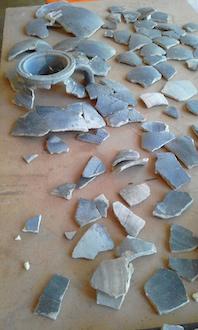 One misconception is the association of volunteering with failure. The simple fact that studies have not been transformed into a profession would explain the existence of volunteer archaeologists. “Many choose not to pursue a career in archaeology after their studies but continue to offer their expertise to research, collections, and publications,” explains Jérôme Primault, professional archaeologist with the Regional Directorate of Cultural Affairs (Direction Régionale des Affaires Culturelles – DRAC) of Nouvelle-Aquitaine.
One misconception is the association of volunteering with failure. The simple fact that studies have not been transformed into a profession would explain the existence of volunteer archaeologists. “Many choose not to pursue a career in archaeology after their studies but continue to offer their expertise to research, collections, and publications,” explains Jérôme Primault, professional archaeologist with the Regional Directorate of Cultural Affairs (Direction Régionale des Affaires Culturelles – DRAC) of Nouvelle-Aquitaine.
While some turn to teaching or other better-paying or more accessible professional careers, continuing their archaeological research on the side, others make a deliberate choice to be volunteers. There are many reasons for this, but the three main drivers are: freedom of choice, working conditions, and, for retirees, the pursuit of meaningful activity.
Whether they’re privately or publicly employed, professional archaeologists (that is, those who are paid for their work) are constrained either by intervention limitations, such as in preventative archaeology, or by organizational constraints, such as the multi-year research plan of the CNRS. For Philippe Jacques, Engineering Science professor and volunteer archaeologist with field training, that was all it took. “I prefer to be a volunteer and be free to choose how I work and what to work on,” he declares. “Without that, I wouldn’t have been able to work on the Dune of Pilat in 1979, which was considered to be an archaeological desert, and end up with the 2018 results,” he underlines with emotion.
For Christophe Coquil, hardware technician and volunteer archaeologist, the biggest factor is the working environment. “Too many sharks for my taste at university,” he notes with regret. He completed a postgraduate degree (Diplôme d’Études Approfondies, DEA, the equivalent of a Master’s degree) in History and Archaeology from the University of Brest, but quit his doctorate after his research subject was stolen (to learn more about this breach of scientific integrity, look at Yann Callot’s account here). Today, he crosses the countryside with his rangers, contributing to the archaeological map of the castles and fortified mottes of the Duchy of Brittany. He works in harmony with the local archaeological authorities, with whom he shares his discoveries. As he explains, “If I don’t pass on the information and the findings, it’s of no use. Might as well leave it where I found it.”
After retiring from the French National Railway Company (Société nationale des chemins de fer français) in July 2017, Daniel Vidal wanted to spend his time on an activity that combines nature and an understanding of human beings. So he started a degree in Archaeology in September 2017, which led to an internship in Philippe Jacque’s team in 2019. As of 2022, he is applying for a Master’s degree at the University of Bordeaux III, as part of the Estran project run by the Mixed Research Unit 5607 of the CNRS. He explains that, for him, “archaeology is more about the desire to do something than to make a job out of it”.
These stories highlight that scientific research cannot be reduced to a professional activity alone, just as the French Standard NF X50-553 on the Management of Research Activities defines a scientist as a person who is dedicated to the study of one or more sciences with rigor and in accordance with scientific methods.
Knowledge and contacts: two major contributions
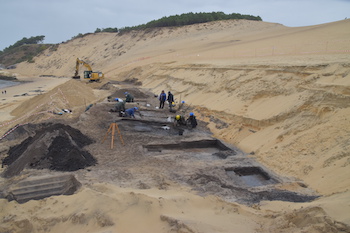 Long-since graduated and still active in the field, Romain Pigeaud has a doctorate in Prehistory, but dedicated his career to publishing, all while regularly publishing his research. “He publishes at least as much as someone getting paid to do it, and that’s how he shares his knowledge and his expertise with professional archaeologists” recounts his friend, Jérôme Primault. “Getting his opinion on this or that is invaluable.”
Long-since graduated and still active in the field, Romain Pigeaud has a doctorate in Prehistory, but dedicated his career to publishing, all while regularly publishing his research. “He publishes at least as much as someone getting paid to do it, and that’s how he shares his knowledge and his expertise with professional archaeologists” recounts his friend, Jérôme Primault. “Getting his opinion on this or that is invaluable.”
Elsewhere, if the history of the Les Landes region is well-known, it is thanks to the work carried out by the members of the Center for Archaeological Research on Les Landes. One of its pillars is Didier Vignaud. Despite the presence of the Universities of Bordeaux, Toulouse, and Pau, it was volunteers and amateurs who realized the archaeological discoveries that awaited in the region, as Didier Vignaud highlights, adding, “it’s a good thing that volunteer archaeologists still exist, because without us, the archaeological research in Les Landes wouldn’t be as advanced.”
Volunteer archaeologists also constitute a strategic asset for the scientific community thanks to their local knowledge. “They are often present on surveys to complete or check the Archaeological Map, which is a key tool in prescribed preventive archaeology, i.e. professional work,” explains Jean-David Desforges. “It’s a good example of volunteers and professionals working together, complementing each other so well that you don’t even notice it.” Doctoral student Olivier Poncin fully understood this synergy and contacted the volunteer Christophe Coquil to benefit from his knowledge of the area where Olivier was carrying out his research on the dynamics of human occupation in the Aber Ildut basin.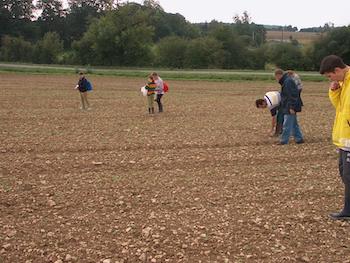
Furthermore, their relationships with local officials and landowners help support smooth interactions and the spread of new information. As a result, their role as intermediaries familiar with the region facilitates the scientific community’s research. “We’re there to help and they’re happy to have us,” underlines François-Xavier Ducellier, president and founder of the Pays Fertois Study and Research Society. Field-trained as part of his studies, François-Xavier Ducellier participated in salvage excavations in Poitiers and planned excavations at Masamas, the Gallo-Roman sanctuary in Saint-Léomar in the La Vienne region, in the 1980s. He holds a Master’s in Medieval History, and chose teaching for his professional career. A professor of History and Geography, he kept up his interest in archaeology by creating the Pays Fertois Study and Research Society (Société du Pays Fertois Etudes et Recherches), which began its work in the Huisne Valley in 1997.
Volunteer archaeologists are an essential support for the scientific community, both in the field and in writing. Their university education and/or field training and their enthusiasm are valuable not just because of their findings, but also because students and professionals can benefit from their expertise.
Activities supporting vigilance against looters and other damage
 Just like professional archaeologists, volunteer archaeologists play a front-line role in the fight against vandalism, a problem that is all too present in the field. One might think that volunteering could attract looters, but to be clear, the offenders are interested in the sites themselves above all else.
Just like professional archaeologists, volunteer archaeologists play a front-line role in the fight against vandalism, a problem that is all too present in the field. One might think that volunteering could attract looters, but to be clear, the offenders are interested in the sites themselves above all else.
Therefore, archaeologists are on the lookout every day, paying particular attention, for example, to what is going on in the fields. “The moment we see someone with a frying pan, that really ruffles our feathers, because it’s unacceptable,” says Stéphane Brière. Education is needed to prevent people from inadvertently ransacking valuable sites. Notably, ties must be fostered with farmers so that they will communicate with research societies and local authorities regarding the plots of land that they work on and possibly allow them to take a look. To this end, conferences can be organized in order to raise awareness and inform people at all levels, before disaster strikes.
Another problematic area where volunteer archaeologists can also intervene is natural erosion and certain leisure activities. That’s how Alain Bénard puts it in the 2022 Journal of the Prehistoric Study and Research Society of Les Eyzies (Société d’études et de recherches préhistoriques des Eyzies) on cave art conservation problems in the Fontainebleau forest. Dr. Bénard is a doctor in Prehistory and is retired from the banking sector. He is also a researcher in the Mixed Research Unit 7041 of the CNRS and is president of the Study, Research, and Protection of Cave Art Group.
Volunteering is therefore not synonymous with incompetence or attracting looters, but rather, volunteer archaeologists’ contributions complement those of professionals in the fight against natural and man-made damage to archaeological heritage.
From lack of recognition to mourning falling numbers
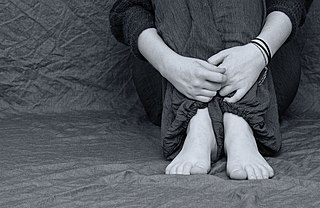 Since professional and volunteer archaeologists speak the same language and have the same educational background, they should have a good working relationship. “In certain heritage spaces, volunteer work is [even] essential to the continuity of public services,” underlines the Study relating to volunteer work and the participation of civil society in Heritage Policy, 2022, (Étude relative au bénévolat et à la participation de la société civile aux politiques des patrimoines) on page 65, presenting municipal libraries as an example.
Since professional and volunteer archaeologists speak the same language and have the same educational background, they should have a good working relationship. “In certain heritage spaces, volunteer work is [even] essential to the continuity of public services,” underlines the Study relating to volunteer work and the participation of civil society in Heritage Policy, 2022, (Étude relative au bénévolat et à la participation de la société civile aux politiques des patrimoines) on page 65, presenting municipal libraries as an example.
But a divide still exists between professionals and volunteers, as evidenced by Alain Bénard’s note that, due to the fact that his field is cave art, his relationship with professionals is “much more peaceful than it is for excavations”. Indeed, some professionals put their personal interests ahead of building relationships with volunteers, valuing the work over sharing their knowledge and their experience. The case of the lone wolf who is more interested in what the volunteers find than in the volunteers themselves is not unusual and can upset people. “Some professionals have an oversized ego and don’t take the time,” bemoans Stéphane Brière, “although that remains the exception.”
Sometimes tensions can rise during conferences, as Didier Vignaud regrets to report, “When taking part in conferences, it’s not unusual for me to be perceived as an intruder.” He’s not the only one to face this accusation. Despite the fact that science does not depend on one’s authority, but on the quality of the results produced, the evolution of practices in France has led to a vision of archaeology where only civil servants and a few authorized organizations are seen to be allowed to practice it.
This perspective leads to confusion that should be avoided. In the interest of archaeological research and the defense of cultural heritage, we should listen instead to professional archaeologist Jérôme Primault’s point of view, “the moment someone proposes a serious, well-argued, and scientific work, I collaborate with them in the same way, regardless of their status.” In this way, there is no longer a dividing line between the two categories, only the scientific debate matters.
Even if certain situations can lead to tensions, it is still important to highlight the beneficial partnership between professional and volunteer archaeologists. “Whether we’re one or the other, we’re all motivated and driven by the same thing: understanding the past, trying to detect its traces, and contributing to greater knowledge on the whole,” sums up Stéphane Brière. A single guiding principle is unanimously shared: respect for ethics.
The importance of volunteer archaeologists is also emphasized in a report by the Ministry of Culture: “Nevertheless, it soon becomes evident that there is a place for volunteers in the field of archaeology and today, a number of professionals regret their disappearance” (Étude relative au bénévolat et à la participation de la société civile aux politiques des patrimoines, 2022, p. 46). If this report quickly dismisses the existence of volunteer archaeologists that we are emphasizing here, the Collabora program of the CNRS and the Particip-Arc network highlight their relevance in the heritage policies of the 21st century.
The volunteer scientist: a profile worthy of further study
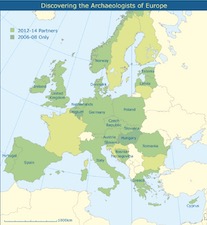 As seen through the numerous accounts here, volunteer archaeologists are essential to archaeological research, simultaneously passionate, skilled, and protective of heritage sites. Be that as it may, there are no studies focusing on this group, despite existing studies on professional salvage archaeologists with the Discovering Archaeologists in Europe program and even on amateur archaeologists with the development of the citizen science and open science movements. This subject should be of interest to bodies such as the Institute for Research and Innovation at the Pompidou Center and the Particip-Arc network.
As seen through the numerous accounts here, volunteer archaeologists are essential to archaeological research, simultaneously passionate, skilled, and protective of heritage sites. Be that as it may, there are no studies focusing on this group, despite existing studies on professional salvage archaeologists with the Discovering Archaeologists in Europe program and even on amateur archaeologists with the development of the citizen science and open science movements. This subject should be of interest to bodies such as the Institute for Research and Innovation at the Pompidou Center and the Particip-Arc network.
A better understanding of the profile of volunteer archaeologists might reveal a number of surprises, starting with their number. Indeed, between the members of the National Coalition of Independant Scholars (NCIS) who must not be professionals in order to join, the researchers classed as independent at the annual meeting of the European Association of Archaeologists, and those volunteers identified in this article working in the laboratories of the CNRS, as well as the organizations and collectives mentioned, the number of volunteer archaeologists could be even more significant than we realize today.
Sources
Interviews with (in alphabetical order):
- Alain Bénard: retired from the banking sector; Doctor in Prehistory from the University of Paris 1 Panthéon-Sorbonne; researcher at the Archéologies et science de l’Antiquité laboratory (UMR 7041 of the CNRS); president of the Study, Research, and Protection of Cave Art Group (Groupe d’études, de recherches et de sauvegarde de l’art rupestre – Gersar).
- Jean-Claude Bessac: trained as a master stone cutter; Master’s in Archaeology from the École des Hautes Études en Sciences Sociales in Paris; Doctorate from the University of Rennes II ; research engineer at the CNRS and recipient of their bronze medal in 1988; authorized to lead research since 2004. Read more about his career on the ArScAn website.
- Stéphane Brière: Bachelor’s in History from the University of Mans; field-trained alongside professionals with the Pays Fertois Study and Research Society (SPFER).
- Christophe Coquil: hardware technician; Master’s in History and Archaeology from the University of Brest.
- Jean-David Desforges: operations manager in the interdepartmental archaeology service (departments 78-92); president of the Society for the Prevention of Archaeological and Historical Heritage Looting (HAPPAH).
- François-Xavier Ducellier: retired from second level teaching; Master’s in Medieval History; founder and president of the Pays Fertois Study and Research Society (SPFER).
- Jean-Olivier Gransard-Desmond: iconologist and archaeologist at ArkeoTopia; associate researcher at the Archaeology and Archaeometry laboratory (UMR 5138 of the CNRS).
- Philippe Jacques: professor of Engineering Sciences; field-trained in archaeology, and director of the archaeological excavations of the Dune of Pilat.
- Jérôme Primault: Heritage Curator at the Regional Directorate of Cultural Affairs of Nouvelle-Aquitaine (DRAC) – Poitiers site (Ministry of Culture)
- Daniel Vidal: retired from the French National Railway Company in July 2017; Bachelor’s in Archaeology; as of 2022 applying for a Master’s at the University of Bordeaux III as part of the Estran project run by the UMR 5607 of CNRS.
- Didier Vignaud: construction consultant; Bachelor’s in Archaeology Techniques in Europe from the French National Center for Distance Learning (Centre national d’enseignement à distance); Master’s in Social and Human Sciences with a focus on preventative and planned archaeology at the University of Paris 1 Panthéon-Sorbonne, and in 2018 at the University of Paris-Sorbonne; as of 2022 PhD student in second year at the University of Pau.
- Demoule J.-P. , Landes C. et Jacob J.-P. (dir.), La fabrique de l’archéologie en France, Paris, Éd. La Découverte, 2009, p. 54-66.
- Demoule J.-P., Guide des méthodes de l’archéologie, Paris, Éd. La Découverte, 2005, p. 268.
- Fédération des archéologues bénévoles et amateurs de France, Livre blanc sur l’archéologie et la nation, Décision de l’Assemblée Générale du 13 février 1988, 1988, Agde.
- Gransard-Desmond J.-O. « Professionnels, bénévoles, amateurs et citoyens : des acteurs de la recherche pour quels apports ? ». Revue canadienne de bioéthique / Canadian Journal of Bioethics 2/3, 2019, p. 166‑193.
- Gransard-Desmond J.-O. “Can we really distinguish between treasure hunters and volunteer archaeologists?”. Internet Archaeology 33. http://dx.doi.org/10.11141/ia.33.2
- Gransard-Desmond J.-O. et Houdin J.-P. “Professionals, volunteers and hobbyists in archaeology”. Paper recording of the conference Archéo-éthique from the 26 of May 2018 at Paris, July, 1, 2018.
- Le Clech S., Saunier B., Penicaud P. et Piechaud S., Étude relative au bénévolat et à la participation de la société civile aux politiques des patrimoines, Ministère de la Culture – Direction générale des patrimoines et de l’architecture, mai 2022.
- Mouillebouche H., « Les bénévoles dans l’archéologie française. Réintroduction d’une espèce disparue ? », Archéothéma Hors-Série 5, 2012, p. 14‑15.
Further reading
- See the participatory science programs listed by the French National Research Agency (Agence nationale de la recherche) Collabora program and its list of cultural participatory platforms with a collection of around one hundred projects.
- Access the Particip-Arc network, supported by the Ministry of Culture, a network of contributors to cultural participatory research and its project directory.
- The website of the Center for Archaeological Research on Les Landes.
- Read Didier Vignaud’s scientific publications on his Academia profile.
- See Philippe Jacque’s reports in La revue Archéologie de la France – Informations (the French Archaeology Review – News) and in particular the notice of the 2018 planned excavations “La Teste-de-Buch – Dune du Pilat,” [archaeological notice], French Archaeology Review – News [on line], Nouvelle-Aquitaine, published online September 14, 2021.
- Wikipedia entry on Romain Pigeaud.
- De la Michellerie, E.: “Why is archaeology not restricted to experts in the field?, April 1, 2022, [on line] https://www.arkeotopia.org//en/activities/lobbying/549-amateur-scientists-the-unsung-heroes-of-archaeology.html
![]() . French Standardization Association (Association française de normalisation – Afnor): “Management des activités de recherche”. Standard. National standards and national normative documents. Afnor, July 2014. https://www.boutique.afnor.org/en-gb/standard/nf-x50553/management-of-research-activities/fa180471/43470.
. French Standardization Association (Association française de normalisation – Afnor): “Management des activités de recherche”. Standard. National standards and national normative documents. Afnor, July 2014. https://www.boutique.afnor.org/en-gb/standard/nf-x50553/management-of-research-activities/fa180471/43470.
ArkeoTopia, an alternative approach to archaeology® aim is to give another perspective to archaeology today non-in order to better help existing bodies prepare that of tomorrow. To know more about the association, watch our institutional video and our actions. Any question contact us thanks to our form.






